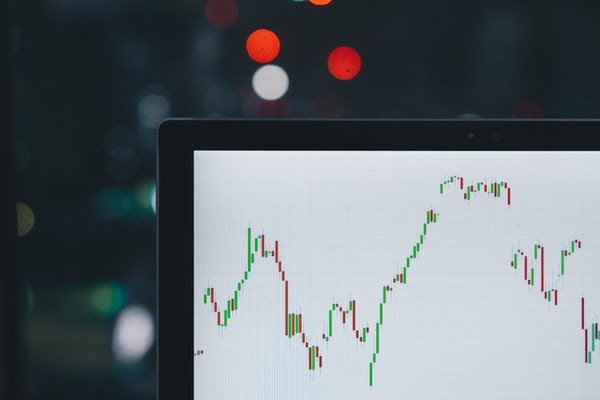Home › Market News › Volatility Means Opportunity
The Merriam-Webster dictionary defines volatility as “a tendency to change quickly and unpredictably.” If you take a peek at Investopedia, they take the definition a step further by saying that “volatility represents how large an asset’s prices swing around the mean price – it is a statistical measure of its dispersion of returns.”
Obviously, I don’t disagree with either of those definitions, but I think you can sum up what volatility really is in just a single word; uncertainty. That’s it, plain and simple. When the swings get too big, people get scared, and when people get scared they start to panic. This is nothing new. It’s been happening in the markets, in one form or another, for centuries. Volatility is a natural part of the market. You can either embrace it, or avoid it.
Last week we saw what happens when panic sets in. If you’ve never seen this type of price action before, it probably scared you to death. At the same time, I know there are a lot of market veterans out there that live for the big moves we’re seeing right now. These are the kinds of days that can either make or break a day trader.
What we’re going to talk about here is most likely nothing you haven’t heard before. Just the same, it’s important stuff that should not be overlooked. As day traders, we rely on volatility to realize profits. If a market doesn’t move, then there’s no money being made, and that’s the whole reason we’re here in the first place, to make money.
Let’s take a look at some of the pros and cons of day trading in highly volatile market situations.
First and foremost, volatility creates opportunity. When traders see a market moving, they want to jump in to take advantage of the heavy swings. No one wins on every trade they make, so the prospect of getting a second chance to make your money back is very attractive. This is a big reason why you will almost always see a spike in volume and open interest during times like this.
Bigger profits are also a motivator to trade high volatility markets. It’s easier to extend your profit targets when the swings get really wide. On the flipside, however, this can lead to some problems with risk management…
Poor risk management is the bane of every day trader. Biting off more than you can chew is something we’re all guilty of. Assessing your risk before putting a trade on goes a long way to keeping money in your trading account. When you know where you’re getting out before you get in you can trade without fear. Having a game plan is always better than shooting from the hip.
Proper risk management will protect you from the wide swings. Even if you’re ultimately on the right side of the market, there’s nothing stopping an extended pullback from you taking you out of your trade. But, like I said above, the odds are in your favor of getting the opportunity to get back in for another try.
More than $5 trillion was taken out of global equity markets during the recent 7 day break. All the money that was pulled got parked in safe haven assets like bonds and currencies. Eventually, investors and fund managers are going to want to put that money back to work in the stock market. So, don’t abandon all hope in stocks, the Dow Jones is not going to ZERO anytime soon.
After the 12% drop we saw in equity markets last week, I’ve heard a lot of whispers about what could possibly be the best buying opportunity of the decade. Think about that for a minute. Long term investors are champing at the bit for any type of discount they can get. They’re getting it.
If you’re a day trader, there’s really no better way to trade high volatility than ‘quick in, quick out.’ If you’re confident enough to trade multiple contracts, then maybe you can even let one run if it’s looking good. The potential for windfall profits is impressive when the moves get bigger and bigger.
Big swings can be your best friend or worst enemy. If you can’t control your emotions and manage risk, then you’re on the fast track to blowing out your account. There are options out there if you’re worried about taking a big hit.
Last year the CME Group launched micro e-mini contracts for equity index futures. I think times like this are exactly what the CME was thinking about when they first came up with the idea. What they do is offer a low risk option to participate in the market. At 1/10th the size of an e-mini contract, you’re able to extend your stop to stay in a trade longer than you normally would.
It’s a lot harder to get hurt when you put on a small micro position, and it’s a lot easier to hold a position overnight to catch more of the move. The only drawback is that you won’t realize the big profits you would normally expect from catching a 50 point move in the S&P 500 futures.
I’m sure a lot of you are familiar with the Topstep Trading Combine, but did you know we also offer a Micros Swing Trading Combine too? If the increased volatility is keeping you on the sidelines, then this might be a good option for you. After all, the single best way to learn about the market, is to be in the market.
